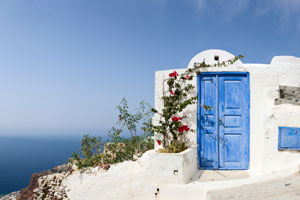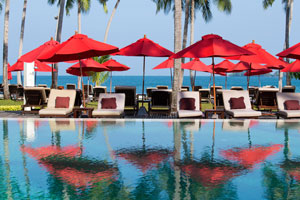To mark Indagare’s new partnership with 1stDibs, we’re highlighting travel and design intel from three of the company’s leading voices.
Anthony Barzilay Freund, Editorial Director of 1stDibs, has loved travel since he was a young boy visiting his grandparents at their home in the U.S. Virgin Islands.“I was only five or six years old when we initially flew down there,” he says, “but I still remember the smell of the air that first morning I awoke and the way it felt on my skin—humid but in a gently enveloping way. Travel touches so many of your senses in indelible ways.”
Today, the New York City–based journalist travels often for work, whether it’s to visit art and design galleries, antiques fairs or museum shows or to scout interesting homes that might appear in the pages of Introspective, 1stDibs’s weekly online magazine.
“Throughout my life, travel has continued to provide me with the wonder of discovery, whether it’s to somewhere halfway around the world or just across the East River,” he says. Those discoveries—meeting an international array of dealers, designers, artists and craftspeople whose creations fill the pages of 1stDibs—inform the content found on the site.
Digital and real-life experiences are complementary pursuits, Freund believes. “If you want to live in a modernist glass box, for instance,” he says, “then you should visit Philip Johnson’s Glass House or Mies Van De Rohe’s Farnsworth House before embarking on building—and furnishing!—one of your own,” he says. “Photographs can only tell half the story.”
Freund recently returned from a family vacation to Stockholm and Copenhagen. Below, we dive into his real-life discoveries in two of our favorite Scandinavian cities.
Indagare members receive 20 percent off their first purchase on 1stDibs (up to $375 in savings), when they sign up for a 1stDibs account below. In addition, they’re welcome to an exclusive consultation with a 1stDibs Private Client specialist. These in-house experts serve as private concierges, providing assistance with all manner of bespoke requests. Learn more at 1stDibs.com.
What are the basic principles of Scandinavian design?
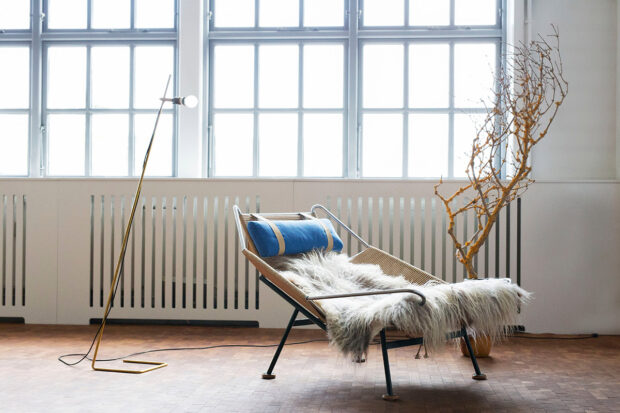
Scandinavian design has always been characterized by simplicity, utility, elegance and a respect for natural materials. Even after modernism spread internationally following World War II and the Scandinavians began a massive migration from the countryside to urban centers, they brought with them their profound appreciation of nature and handicraft traditions. That’s why Scandinavian modernism, which I particularly love, feels warmer than its American or European counterparts. While the Swedes remain rooted in simplicity, humility and an inward-looking aesthetic, Danish design feels slightly more urbane and international.
What are some of the Scandinavian shops on 1stDibs?
Copenhagen

Among the highlights of our trip to Copenhagen was our visit with Tina Seidenfaden Busck at her design store/gallery, The Apartment, in a canal-side residential building in Christianshavn.
Design pilgrims have long put The Apartment on their itineraries, and Tina’s wonderful eye (for both the pieces themselves—European 20th-century design and antiques from around the globe—and the way she curates the space) is matched by her charm and warmth.
More must-sees in Copenhagen:
- The contemporary art and design gallery Etage Projects
- Galleri Feldt for its offering of highlights of Scandinavian modernism
- In Odense, Denmark, these two galleries specialize in antique and vintage Scandinavian pieces that are full of character: Eliaselias and Helmer Design and Antik
Related: Indagare’s Guide to Copenhagen
Stockholm
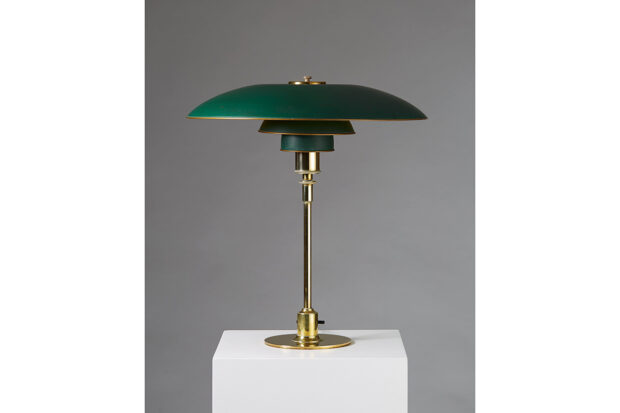
I’d long known of Modernity, Scotsman Andrew Duncanson and Swede Isaac Pineus’s peerless gallery of iconic 20th-century Scandinavian design, thanks to their 1stDibs storefront and participation in top-flight international design fairs. But I’d never before seen their extraordinary inventory in its native habitat, which was mind-blowing.
Other exemplary purveyors of Scandinavian design include:
I’m also a fan of Studio Schalling, which is in Malmö, not Stockholm, but you can stop in on your way to/from Copenhagen.
Related: The Enduring Appeal of Swedish Style (and Where to Find It)
Scandinavian Design In New York City
These experts aside, my love for Scandinavian design has been nurtured by three design galleries in New York City: Dienst & Dotter, Laserow and Hostler Burrows. Anyone in New York with a hankering for the best in Swedish and Danish design would be well served by a visit—both in person and virtually, via 1stDibs—to these remarkable dealers.
What are some architecture, art and design gems of Copenhagen and Stockholm that will be especially appealing to design lovers?
Copenhagen
Amalienborg, the quartet of royal structures around an octagonal courtyard (Queen Margrethe II resides in one of the four buildings) is to my mind one of the prettiest public squares in Europe.
The Designmuseum Denmark has recently reopened after a multi-year renovation of modernist Kaare Klint’s original design. For anyone interested in Scandinavian design, this is a must-see—even just for its remarkable array of Danish chairs through the ages (but there’s so much more).
On an afternoon wandering, I chanced upon the Thorvaldsens Museum, which is one of the first public museums in Denmark. Filled with the works of Danish sculptor Bertel Thorvaldsen (1770–1844), as well as the antiquities and antique objects he voraciously collected, it’s as memorable for its polychromatic setting (an exuberant palette created by Thorvaldsen nearly 200 years ago) as it is for the treasures it contains.
Bring This Hotel Bed Home
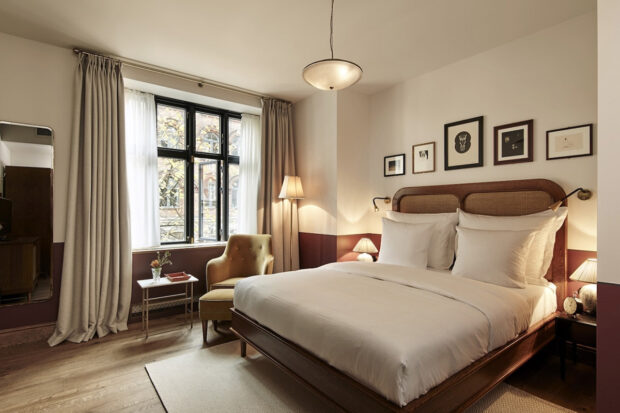
We loved staying at the Hotel Sanders, on a quiet street just off the King’s New Square and around the corner from the Royal Theatre, home to the Royal Danish Ballet. (We noticed Nikolaj Hübbe, the company’s artistic director and former principal of the New York City Ballet, regularly stopping by for coffee on his way to work.) The public rooms, designed by the talented Pernille Lind, whom Introspective profiled a few years back, are studies in Scandinavian chic. And the guest rooms, featuring furniture from the Sanders Collection, available on 1stDibs from Novocastrian, are as comfortable and cozy as one could hope a bedroom to be.
Stockholm

You can’t visit Sweden without touring at least one Gustavian structure, the country’s pitch-perfect take on neo-classicism. We visited two: the stately Drottningholm Palace (don’t miss the Chinese Pavilion at the far end of the gardens) and Rosendal Palace, which is located on Djurgården, an island park in the heart of Stockholm that we strolled through for an entire day.
Belgian-born, Stockholm-based contemporary artist Carsten Höller has recently shifted professional gears to open Brutalisten, one of the most thought-provoking restaurants we’ve ever eaten at. Its menu is unnervingly simple, with dishes organized by the number of interventions applied to ingredients. (A soft-boiled, farm-fresh egg is in the “1” column, the single intervention being heat.) On the restaurant’s double-height wall, there’s a huge Dan Flavin neon sculpture, whose light, Holler later told us (perhaps in jest), might be more flattering to diners if the Flavin estate would allow him to install a dimmer switch.
No design lover visiting Stockholm can miss a visit to Svenskt Tenn, the nearly 100-year-old homewares store for whom Josef Frank created so many of his bright, floral fabrics, very much enjoying a renaissance today.
Now with a popular branch in New York City, among other locations, Fotografiska photography museum started in Stockholm, and the mother ship—its waterfront location is where many of the visiting cruise ships dock—continues to attract visitors with its crowd-pleasing exhibitions.
At the urging of Lee Mindel, the noted architect who is a friend of longstanding, we hopped in a cab from Fotografiska and headed south to the Woodlands Cemetery, a UNESCO World Heritage site designed by Erik Gunnar Asplund and Sigurd Lewerentz. Perhaps not everyone’s idea of a design mecca, the Woodlands cemetery is a lovely, contemplative park, albeit one punctuated by rows of tombstones (one of which belongs to Greta Garbo) and with chapels and a crematorium, among other structures, exemplifying the quiet poetic nature of Swedish mid-century modernist architecture.
Did you learn any design lessons while in Scandinavia?

There’s a deeply held and relaxed appreciation about design that is really appealing (and worthy of emulation): no angst, no worries about what’s on trend, no self-consciousness about things that might be slightly banged up. Well-worn means well-loved!
I’ve been really sensitized to the tactility of Scandinavian design, which is not only about shape and color, but about the way things feel and reference nature. That attitude has a huge impact on humanizing a space and making it more warm and comfortable—even if there’s not a lot of stuff and even if it’s not traditionally ‘cozy.’
There’s a phrase popular in design circles now called organic modernism. It’s this idea that contemporary design can still be connected to the natural world in some way. That’s a lived experience in Copenhagen and Stockholm, because the Danes and Swedes are so aware of the water, the sky and the weather. The natural landscape is so central in both those cities. The populace has just breathed it in and incorporated it into every aspect of daily life and brought it into their homes.
Do you prefer buying new or sourcing vintage?
The beauty of 1stDibs is that you can find beautiful things from any period, every country and in any style. I like mixing them. Matching is not as important. Honestly, if you filled a room just with all the things you love, regardless of style or timestamp, you (or a talented interior designer!) could likely figure out a way to make them work well together.
Lightning Round: Great Examples of Scandinavian Design on 1stDibs
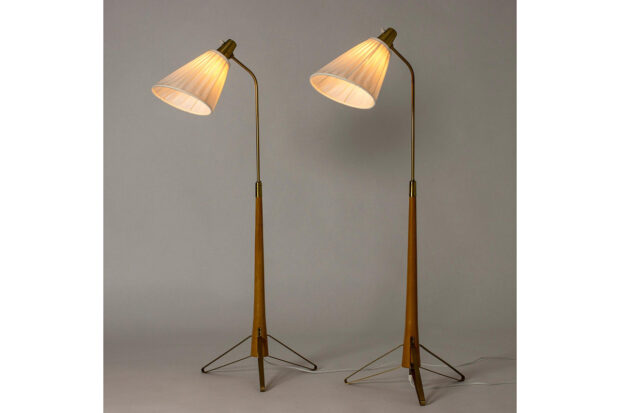
- Vintage mid-century floor lamps, Hans Bergström, Sweden, 1950s (shown above)
- Frits Schlegel Sofa / Settee in Blue Striped Savak Wool, Denmark, 1940s
- Large Marta-Maas Fjetterström ‘Ljusa Plador’ Carpet, 1933
- Composition by Rune Hagberg, Sweden, 1950s
- Dining Table Model PK54 Designed by Poul Kjaerholm, Denmark, 1963
- Viggo Boesen Easy Chair for E.V.A. Nissen & Co.
- Hans-Agne Jakobsson Brass Chandelier Model 348/15, 1960s
- Josef Frank Dining Table Model 1020 Produced by Svenskt Tenn in Sweden
- Nanna Ditzel, Set of Three Orange Fibreglass Stools, 1969
- Danish Modern Stoneware Abstract Sculpture by Ole Bjørn Krüger, 1960s
- Sofa DS-61 by De Sede, Switzerland, 1970s
- Unique Handmade Earthenware Table Lamp by “Joska”, Denmark, 1940s
- Hans-Agne Jakobsson Wall Lamps Model V-180 by Hans-Agne Jakobsson AB in Sweden
Indagare members receive 20 percent off their first purchase on 1stDibs (up to $375 in savings), when they sign up for a 1stDibs account below. In addition, they’re welcome to an exclusive consultation with a 1stDibs Private Client specialist. These in-house experts serve as a private concierge, providing assistance with all manner of bespoke requests. Learn more at 1stDibs.com.


